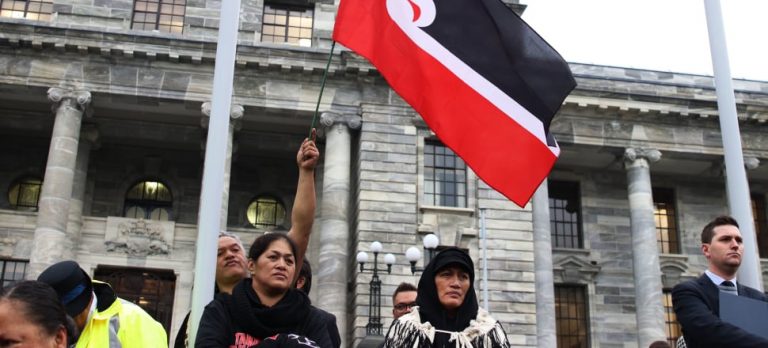Organisational Policy and Procedures
Treaty-based change for NZ’s health & disability system
We’re in for a new Treaty-based health and disability system. That’s one of the recommendations of the final report on the Health and Disability System Review.
The Review recommends that the Treaty/ te Tiriti principles are embedded through New Zealand’s health and disability system. It also recommends amending the New Zealand Public Health and Disability Act 2000 to reflect more recent interpretations of the Treaty of Waitangi (for the final report see here).
The Waitangi Tribunal’s principles will be important.
In its report – Hauora: Report on Stage One of the Health Services and Outcomes Kaupapa Inquiry (Hauora report)25 (Wai 2575) -the Tribunal criticised the 3 Ps approach to Treaty interpretation (Participation. Instead, it outlined 5 Treaty principles for our future health system (see below).
(For more about what the Tribunal report check out Learning from the Tribunal Health Report)
9 tips to help you prepare for Alert Level 1 & beyond
We’re heading towards Alert level 1 so let’s get our workplaces ready.
We don’t know exactly what’s involved in Level 1 but we do know that we’re going to have to be careful and vigilant about public health. Always.
COVID-19 won’t be our last pandemic. Pandemic readiness must be part of how we prepare for Alert Level 1 and beyond. Here are some tips to help you prepare.
Tip 1: Distancing

Current physical distancing requirements will relax, but if it’s possible maintain workplace measures to support distancing like:
-
more physical spacing between people
-
more online and fewer in-person meetings
-
staggered/rostered work schedules
-
smaller programmes/courses
-
contactless deliveries.
Tip 2: Keep up with the hygiene and cleaning routine

This is just good practice and should continue in the workplace. Maintain signage about coughing/sneezing hygiene and ensure wide access to tissues, soap, sanitiser, masks and other relevant protective gear.
Ensure that shared spaces are thoroughly cleaned each day. If staff take turns with this, develop an agreed checklist of hygiene and cleaning tasks to be achieved.
Tip 3: Contact Tracing
Continue to keep a record of who you are working with and who is entering the workplace. Make sure people understand why and what you’re doing it for.
Contact tracing is important for public health purposes. It’s a key way to track and contain infection outbreaks.
Tip 4: Strengthen remote capability

If you’ve been working remotely, keep it up. It is your back-up plan if there’s another infectious outbreak.
Ensure you’ve got the basics covered:
-
your tech solutions for communication
-
training for staff
-
remote/flexible working arrangements agreed with staff and reflected in their employment agreements
-
your handbook with policies and procedures updated and online for easy access and use by remote staff.
Tip 5: Encourage personal responsibility for health

You need everyone on board – everyone you work with- to stay at home if they are sick.
Communicate this consistently.
Action it by:
-
allowing sick or special leave when staff report minor – serious symptoms of COVID-19
-
allowing staff to work remotely so they can self-isolate whenever they are reasonably concerned about exposure to COVID-19 or are experiencing symptoms.
The costs of these measures will be less than the cost of a future lock down. If you’re worried they will be mis-used, make sure your other policies dealing with conduct, performance expectations and disciplinary action are fit for purpose.
Tip 6: Review and respond

COVID-19 economic impacts are predicted to broaden so keep an eye on what’s happening for those you serve. It may be necessary to re-purpose resourcing or to scale an activity you do up or down to become more responsive and viable in the post-COVID 19 world.
Need help with that? Check out the range of government support available.
Tip 7: Take special care of people-facing and vulnerable staff

Monitor and address risks to:
-
staff with pre-existing conditions like heart disease and diabetes that make them especially vulnerable to COVID 19
-
essential workers and public -facing staff (eg foodbank staff; caregivers; health practitioners; bus & delivery drivers).
In addition to controls like masks and screens, encourage regular testing of your front-facing staff and essential workers for COVID-19 and that they get the flu shot.
Tip 8: Improve business continuity planning

We’re all in this together and stronger for it.
Improve your business continuity planning by making arrangements now with others operating in related areas about sharing resources, staffing and volunteers, obtaining supplies etc during a pandemic outbreak.
Tip 9: Stay on top of public health information

COVID-19 has reminded us we are all in the business of public health.
We need to stay on top of public health data so we can reliably identify hazardous activities and the risks and develop controls in a responsive way. Stay informed and keep your staff and others informed.
How parenting helps you manage workplace health and safety
Parenting is “risky” business. So is managing health and safety in the workplace. Apply what you know as a parent and you’ll be on course to health and safety in the workplace.

Similarities
Risk-management is ordinary
We want our kids to be happy and thrive so we let them take chances, make mistakes. We let them climb the highest tree, take a high skate ramp or bike jump even though “secretly” it may scare us to death.
Healthy risk-taking helps kids become resilient. Also important are caring & supportive relationships, coping skills, encouraging kids to problem-solve and letting them make mistakes to learn. Rather than say no to our kids risk-taking, we prepare them, inform and equip them, support them through the challenges and mishaps.
Risk-taking is also an inevitable part of business. It goes with employing staff; working with people; living with climate change and prospects of natural disasters etc. Preventing and dealing with risks therefore, needs to be BAU in terms of workplace culture, staff and client relationships, policies and procedures and decision-making processes.
Guided by a risk appetite
Sometimes we have to say “no” to our kids’ options for fun. But more often we don’t. Our response depends on our “risk appetite” – the level and nature of risk that we will accept given the likely benefits of the activity (eg can I live with the consequence of torn clothing, damage, a broken bone if the risk eventuates?).
Similarly, as managers, governors and staff, faced with choices that carry risks, we will consider what level and types of risks we can live with and manage. We communicate and engage with staff and others around what risks we’re comfortable with through our policies and procedures, when assessing risks and adequacy of controls.
Fair response
As a parent and as a manager, our response to risk(s) will depend on how severe we think the consequence will be and how likely it is. Our response should be proportionate, reasonable and ideally, particular to the risk(s).
Risk scenarios involving the most severe consequences should be prioritised and receive the most intense response.

Differences
Regulations
Regulations require workplace health and safety to be front and centre for workplaces. The job of a parent is less regulated with laws applying only in specific circumstances (eg riding with a helmet, use of child restraints, criminal offences).
This difference has important consequences. For example, organisations face sanctions if they don’t comply with legal requirements. More positively, a business or organisation can gain from the ready-made guidance provided by regulations.
Disclosure
As parents, we’re not usually obligated to talk to our child(ren) about risks. By contrast, full and transparent disclosure of information about risks is necessary in the workplace. Staff, clients and visitors to the workplace have a right to be fully informed about of risks to their safety and to make decisions about their safety based on that.
Gut versus informed
As a parent, we’ll often act on our “gut” about risks. Sometimes, we might do extra homework to get better informed about the real picture but it’s not required.
A more systematic and thorough approach is however expected of management. A manager must take reasonable steps to keep themselves informed about risks and put effective safety controls in place. Managers should therefore be aware of relevant data from industry and elsewhere about risks and effective safety controls (eg protective equipment; MoH guidelines).
Participation
The extent to which we talk to our children about risks and safety will depend on their age, our parenting style and preferences etc.
As managers, though, the law is clear that we must engage and allow staff to participate in health and safety decision making in the workplace. It makes sense too if we want to ensure that we are over the risks and taking all due care about the health and safety of those in our workforce.
Conclusion
Our health and safety responsibilities can sometimes feel overwhelming. Now, more than ever, health and safety must be front and centre for organisations.
If you’re into DIY policies and procedures, remember you’ve got a lot to practical experience of managing risk to draw on if you’ve been or are a parent.
But if you’re not into DIY and want the convenience and relief of having someone else take care of your agency’s policies and procedures, contact us. Our online policy and procedure service, accessible 24/7, includes health and safety policies that we can customise to you.
Let us look after your policy and procedure needs so you have more time to focus on your work and whānau.
Contact us NOW!
Your single source of truth for remote working
There’s a revolution coming. It’s called remote work and it looks set to become the new norm for work.
During the pandemic lockdown many of us have been forced into remote working. We may have been kicking and screaming about it at the start, but predictions are that many of us will stick with it even after the pandemic is over.
But are you ready for it? To really get the most out of remote work, you have to do the groundwork.
Your handbook comes first
Sid Sijbrandij, the CEO and co-founder of GitLab, an all-remote company with over a 1,000 employees across the world, advocates strongly that the organisational handbook is vital to success in working remotely.
Their handbook is the company’s single-source of truth – the bible of the organisation. It includes the company’s mission and values, policies, processes, training and communication tools. It provides staff with 24/7 access to guidance and information they need to do their work whether as managers or employees. A change must be made to the handbook before any change can be made in the organisation.
It may seem counter-intuitive, shocking even, to managers who are all about action.
But it’s not hard to figure out “the why.” With remote working, you can no longer rely on daily in-person contact with staff to answer questions, check-in on progress, induct new staff and volunteers, provide supervision, monitor and support safety and wellbeing.
You have to have your policies and processes sorted, people tuned in and able to access the organisational mission and values. Otherwise, you leave your staff prevented rather than empowered to do their work and the organisation at risk of chaos.
Start early, prioritise it
The message is clear – the earlier the better to get your handbook/ policies and procedures up and running as your agency’s Single Source of Truth.
The Policy Place can help you bring all your documents together in one online source that’s accessible to staff any time anywhere. It should include all your “must-dos,” address your compliance needs and include user-friendly guidance about processes (eg onboarding new staff, information management, supervision, feedback and complaints) and your communication tools.
It doesn’t have to be perfect
Remember, it doesn’t have to be perfect. Your policies and procedures/ handbook should be living and iterative documents. They will change as and when required eg when a regulatory requirement changes; when your team want to substitute a more efficient process for an existing one.
Through scheduled monthly reviews, the Policy Place keeps your policies and procedures updated. We also review and update if things change meantime as occurred with the pandemic. The job is never-ending and nor should it be, when it comes to your organisational bible.
Don’t let it happen to you.
People running charities should be selfless, honourable. That’s what we expect right?
Certainly, we expect honesty and that they can be trusted to receive and use public money for charitable purposes and not for personal gain.
But what’s in place to help those governing and managing organisations to keep on the straight and narrow and fulfil our expectations?
The short answer is not much. Organisations have trust deeds but they are highly variable about what they cover. There’s the Charities Act but it’s outdated and currently under review. There’s not much other guidance readily available.
We feel shocked, let down when wrongdoing in charities is exposed.
Sometimes, the organisations are in receipt of huge funding (ie huge for a community service). Yesterday, for example, the New Zealand media revealed that Trustees of Quitline continue to be remunerated although the service itself ceased to operate more than 5 years ago. Moreover, it had more than $2-3 million in reserves including more than $430,000 of Health funding. In a similar vein, a report on an Inquiry into spending by the Hepatitis Foundation, released late 2019, found excessive spending, a lack of recordkeeping and misuse of the charity’s funds.
This is why organisational policies and procedures are so important. I’ll use the policy and procedures in the online Policy Place service to demonstrate.
It’s important to instil the organisational mission and values
Policies and procedures are central to instilling organisational values throughout an organisation. When organisations join our online policy and procedure service or want a policy overhaul, we provide them with customised policies and procedures. This is so that their policies and procedures reflect their kaupapa and organisations’ unique differences.
In areas like governance and financial management, subscribers gain access to policies that reflect and embed a decision-making approach that would be reasonably expected of an organisation receiving public money. For example, when managing income, expenditure and assets, Policy Place subscribers must consider and apply these principles:
- Value for money
- Accountability
- Transparency
- Responsible
- Ethical
- Equality
Each of these principles is defined. As a component of all aspects of financial management, the principles help prevent situations of excessive expenditure in sensitive areas eg travel, meals and accommodation.
Help with financial management
Board members come from all walks of life. That’s a good thing. But not all of them are going to know about careful and prudent financial management.
The Policy Place online financial management policies and procedures are therefore crucial to board members and managers complying with their financial management responsibilities. In particular, policies and procedures dealing with financial controls, delegations, recordkeeping, reporting and prevention of fraud.
Reimbursement of expenses is often a big issue in organisations. The Policy Place policy includes a number of controls eg:
- the above financial principles
- reimbursement criteria
- pre-approval requirement
- the requirement that expenses were both reasonable and actual.
Applied properly, these financial management policies and procedures safeguard our subscribers against the misuse of funds and excessive spending. Trustees and managers are helped to make financial decisions in the best interests of their organisations.
Recruitment of trustworthy board and management
We know how hard it can be to recruit and retain good people for boards. It’s getting harder and harder.
There’s little guidance around on how to do it. Trust deeds usually provide for the election of Trustees. There are also some legal disqualifications. It’s another area that needs to be addressed in policies and procedures.
The Policy Place does this with its online policies and procedures. Policies guiding the recruitment and induction of board members, their responsibilities and outlining membership, disqualification and termination criteria are all relevant and helpful.
Take-aways
We can’t be naive when we’re responsible for public money and fulfilling charitable purposes.
Make sure your organisation’s policies and procedures are consistent with your charitable purpose and kaupapa.
Don’t leave your board and management to sink or swim. Provide the guidance they need with policies and procedures addressing key areas of responsibilities like financial management and governance.
Contact us at the Policy Place for policies and procedures to lessen your stress and worry, guide good decisions and lighten your load.
Your guide to child and family-friendly policies and procedures
Heart, mind and skills are essential, but policies and procedures are also important. They set base-lines for child and family-friendly practice in an agency.
Here’s a checklist of some key policies and procedures to support child, whānau and family-friendly practice in your agency.
Contact The Policy Place for help with these and other policies and procedures.
 |
Flexible working arrangementsIt’s in the Employment Relations Act but policy and procedure helps clarify:
|
 |
Tamariki in the workplaceTo evidence compliance with Social Sector Accreditation Standards – Level 2 policies and procedures should clarify roles and responsibilities for tamariki while on-site, provide for adequate supervision and use of child safe practices. |
 |
Address diversity amongst rangatahi and familiesPolicies and procedures should:
|
 |
Inclusion and engagement of children and whānauBoth Social Sector Accreditation Standards and Health and Disability Standards require mahi and engagement with families. Policies and procedures can help clarify how this should be done in:
Policies to recognise and support children’s rights to participate in services and decisions that relate to them are a must for Social Sector Accreditation Standards (eg policies for informed consent, feedback and complaints). |
 |
Evaluation and ongoing improvementFeedback and complaint policies should provide for feedback and complaints from family members about their service experience. They must be age and stage appropriate for tamariki with different abilities. |
 |
Support whānau ora/ family wellbeingPolicies and procedures should address:
|
 |
Best interests and protection of tamariki/rangatahiPolicies and procedures for social, health and disability services must address:
It’s also helpful for agencies to have policies and procedures in place about how challenging behaviours should be managed, the use of child-safe practices and how children’s safety and best interests will be prioritised. |
 |
Background and child safety vettingPolice vetting and child safety checks for children’s workers are a must under the Children’s Act 2014. |
“Upping the Ante” with workplace health & safety
With workplace injury still so prevalent and always a possibility, is there something more we should and can be doing to safeguard the health and wellbeing/hauora of staff?
Mahi/work in the social, community, health and justice sectors is “risky”. Hazards for workers may be physical, environmental, social, psychological and client-related. There are consequent risks to physical, mental and spiritual health and wellbeing for staff and volunteers.
Always review
Questioning and reviewing our health and safety practices is a good starting point. In fact, readiness to question is integral to a good health and safety response.
Hazards and risks are dynamic and change. Checking and reviewing them is a must as is reviewing and checking the efficacy of safety controls.
What about policies and procedures?
Policies and procedures are the bricks and mortar of a positive health and safety culture in the workplace.
Policies should address issues such as:
- health and safety responsibilities (eg who has health and safety officer responsibilities?)
- responses to safety incidents and adverse events
- identification of hazards and management of risks and controls
- prioritising safety responses
- recording of risks and controls (hazard and risk register)
- worksite checks
- bullying and harassment
- training and supervision requirements
- emergency and disaster preparedness
A dynamic response
But policies and procedures are not the whole answer. Risks are not static. They are dynamic and likely to change. This should be allowed for in policies, the way policies are implemented and in the safety measures established to minimise risks.
There must be mechanisms to:
- gather and use data to help identify hazards (eg complaints data, rates of staff absenteeism, weather reports for outdoor activities) and assess and review levels and likelihood of risk
- monitor and keep track of higher risk situations (eg as high complex needs; multi-disciplinary team;
- keep people informed about the risks and respect their right to give/refuse informed consent
- escalate or increase safeguards as needed in order to reduce the level and/or likelihood of risk of harm (eg use of protective gear; re-schedule appointments; cancellation or postponement being monitored.
Case study
A Policy Place subscriber runs group activities for young people. Some of the activities are outside and adventuresome. Before and throughout the adventure activities, the organisation’s policies now provide for:
- data about outside conditions (eg weather) to be closely monitored
- preparedness to respond to escalated risk
- decision-making when risks can’t be adequately managed.
Case study
The staff of a Policy Place subscriber travel a lot to see clients. Sometimes, they are travelling to remote locations. Sometimes they are transporting clients who have histories that indicate risk. We drafted their health and safety policies to comply with the remote work provisions of the Health and Safety at Work Act (General Risk and Workplace Management) Regulations 2016. We also drafted a Transporting clients policy and procedure to provide for risks to be assessed and escalation of safety measures when risk heightens.
Conclusion
The health and safety of everyone in the workplace should always be a priority. Policies and procedures are a good start but we can never be complacent about risk. Question, monitor, check and review risks and adjust and update safety measures regularly. Be safe, stay well!
Big push for pastoral care
Parents will be able to rest easier with the Interim Pastoral Care Code now issued for domestic tertiary students.
The Code requires tertiary providers to actively support the social and mental wellbeing of students and to have policies and processes in place to achieve this. Here’s a quick summation of some key provisions.
General obligations
The obligations of tertiary providers include:
- information and advice to students about matters relating to their health and wellbeing
- providing opportunities for students to have experiences that improve their physical or mental health and wellbeing
- staff training on how to recognise and effectively respond to students who may have problems with health or wellbeing
- identifying and assisting students at risk of harm to self and/or others
- assisting disabled students to access appropriate support where required
- helping students prepare for, and adjust to tertiary study
- assisting students and staff to recognise and respond to discrimination, racism, bullying, and harassment (including sexual harassment).
Student accommodation
Student accommodation providers are required to keep watch over and check on the wellbeing of students, monitor risks and have responsive pastoral care practices.
To provide a positive living environment, they must:
- have house rules that promote student safety and wellbeing
- support health promotion activities
- promote responsible social behaviour and academic success
- meet the cultural needs and aspirations of all groups
- develop appropriate initiatives guided by students to build a sense of community.
Right to participate
The right of students to participate in planning and decisions is recognised. Tertiary and accommodation providers must partner with students around support for their learning and pastoral care.
Providers must give students information and advice to help them:
- make positive choices impacting on wellbeing (eg about drug and alcohol use, safe sex)
- use internal complaints processes; and
- make a complaint to the code administrator if a student is dissatisfied with the outcome or experience of using internal complaints processes.
Bad policy – a loaded dice
Policies shape actions and decisions made by staff. So what’s the effect of bad policy? Bad decisions, hurt people and so much more.
The big example last week was the Oranga Tamariki Pratice Review into the Hastings case.
The review and discussion after it mainly focused on the actions of staff. It’s shocking reading.
Key findings include that:
- there were legitimate concerns for the safety of the baby warranting involvement by Oranga Tamariki (OT)
- not enough consideration and weight was given to options of parental, whānau, hapū or iwi care of the baby
- engagement with the parents, whānau and NGO partners was inadequate
- the social workers didn’t properly understand or act within their statutory delegation
- the basis for applying for an interim order without notice was “weak” and a with-notice application should have been possible
- mechanisms to check the exercise of statutory duties and powers did not operate effectively.
But is there more at issue? Yes! The OT policy framework that underpinned the decisions and actions that occurred.
Policy was relevant
The actions of staff within OT, as in any other organisation, don’t exist in a vacuum. They are shaped by organisational context and policy. In this case, the policy framework reflected in the Oranga Tamariki Act 1989 (“the Act”).
The case review indicates that staff were effectively biased against the options of leaving baby with the parent(s) or whānau members. It suggests that staff should have been more open.
But the bias was not surprising. The parent in the case had apparently had a previous child removed from her care. The case review indicates staff believed that the “subsequent children” provisions of the Act applied. These provisions basically prescribe bias.
Subsequent children provisions
The “subsequent children” provisions were passed into law as part of the last National Government’s “vulnerable children” agenda (sections 18A-D of the Act).
The provisions basically prescribe that if a parent has previously had a child permanently removed from their care due to abuse or neglect, any subsequent child who comes into their care will be regarded as “in need of care or protection” unless that parent can demonstrate they are safe to care for the child.
The parent is not barred from parenting their subsequent child. But the dice is loaded against them. Whereas OT usually has to investigate and substantiate care and protection concerns, the onus lies on the parent to show OT they can safely parent the subsequent child.
The provisions were considered justified by the government because evidence shows increased risks to subsequent children. However, risks are already considered as part of assessment along with evidence of change and signs of safety.
A bad policy choice was made and the subsequent children provisions passed into law. The adverse effects are that:
- they skew the Ministry’s and court’s assessment towards risk and away from protective possibilities (as appears to have occurred in the Hastings case)
- they stigmatise a parent previously involved with the Ministry
- they come close to “once a bad parent always a bad parent”
- they potentially alienate a child from their cultural identity and turangawaewae
- they may be discriminatory – likely to impact most on whānau Māori (given the disproportionate number of Māori in care and likely disproportionate number of subsequent parents who are Māori).
Bad policy. It’s no wonder that the social workers in the case were closed against the possibility of the parents caring for their baby.
Policy implementation
Another policy problem identified in the case review was that legislation and Ministry policy wasn’t properly complied with.
For example, staff misapplied the subsequent parent provisions (1). They failed to engage with the parents, whānau and involved NGOs and to implement the Ministry’s cultural framework and standards for working with tamariki Māori (eg Whakamana te tamaiti – empowering the Māori child).
These failures raise questions about how the policies were implemented – the extent of resourcing and support for staff in the regions to implement the policies and standards.
Policy implementation is often a weak point for agencies- statutory and non-government. It requires resources, commitment and perseverance from an agency to embed policy in a systemic way. One-off training and induction just doesn’t cut it.
Recommendations
The case review makes some important recommendations for change. But it could have made more. Good news- we can expect a lot more effort and commitment from Oranga Tamariki to:
- engage with whānau and NGOs
- embed the cultural practice standard – Whakamana te temaiti
- support and resource implementation of policy and legislation across sites in the regions.
Outstanding
But the review raised some important issues. They weren’t addressed and are outstanding. These are about the need for:
- repeal of the subsequent children provisions, replacing it with policy that works to support parents to safely care for a subsequent child
- mechanisms for early engagement of and accountability to iwi/Māori for decisions about their mokopuna. The case review recommended more oversight and checking of decisions before an application for an interim custody order without notice can proceed. However, the checks continue to be internal (the only exception is the community resource panels). What about external involvement of the iwi to which a child links through whakapapa?
(1.) All the conditions of section 18B were not met (ie court determination wasn’t made) and s18A treated as relevant to whānau members.
Contact us for an obligation-free policy consultation if you want to discuss a policy issue.
If you don’t want the worry of policies and procedures any more, take a look at the services we offer and consider joining our online policy service.
Good decisions need good policies
We walk a fine line as managers.
On the one hand we need to trust our staff and give them scope to use their professional skills and respond to diverse situations and clients. On the other hand, we need to ensure quality service provision and that staff act within the law, regulations and kaupapa of the organisation.
If we don’t get the balance right, the consequences can be dire. If staff are left to decide every situation there will be inconsistencies galore and a high likelihood that something important is missed. Conversely, too many rules can quash worker spirit and prevent client-responsive practice.
Organisational policies and practices are key to getting the balance right. But as many of our clients ask us, how do you know what areas should be covered by policies?
Compliance
In some areas, it’s not hard to know if you need a policy. Legislation, regulations and standards require it. For example:
- the Children’s Act 2014 requires agencies to have a child protection policy.
- the Oranga Tamariki Act 1989 requires the development of policies by the Chief Executive
- both the Social Sector Accreditation Standards and Health and Disability Standards require policies and procedures to meet certain standards.
Clients frequently tell us that their main challenge is keeping up with all the legislative and regulatory changes they have to comply with. Compliance isn’t just a one-off policy. It means being on top of what policies are required and what policies should cover.
This is a biggie for our online clients. They tell us they have peace of mind now knowing that they no longer have to worry about staying on top of all the regulatory changes. They trust that we will keep them updated and they enjoy being able to input to policy reviews.
More tricky areas
It’s often tricky making decisions in situations where there are competing interests. Policies and procedures are especially important here.
A case in point – too little
The case is still being investigated so we don’t know all the facts. But the tragic case of the Canterbury University student found in his hostel room several weeks after his death may be an example of not having enough policy and procedure in place.
There were competing interests. The hostel held itself out as offering pastoral care. But as media comment afterwards indicated, the hostel also needed to respect its students’ rights to privacy and independence.
Without adequate policy guidance and procedure in this type of situation, staff are left to work out how to balance competing interests by themselves. They may veer too much on the side of privacy and independence. They may think it is unduly intrusive to regularly check on students. They are unlikely to feel empowered to act when and if they have concerns about a student’s wellbeing.
The balance can be so hard. It shouldn’t rely on ad-hoc decision-making by staff. It should reflect a systematic and thoughtful process of policy making where competing interests are properly considered and weighed.
Not getting the right balance can be devastating. Our hearts go out to the student’s whānau for their loss.
Regulating for the balance between interests
The Government is now in the process of regulating for this balance of competing interests for domestic students living in hostels. The Education (Pastoral Care) Amendment Bill is currently before Parliament. If passed, it will require student hostels to adhere to a code of practice for the pastoral care of domestic tertiary students. Hostels will now be required to have policies and processes in place to support student wellbeing.
Adherence to the Education (Pastoral Care of International Students) Code of Practice 2016 is already mandatory for international students.
Too much policy
The worst thing about tricky situations is that often you don’t know it’s tricky until after something bad happens. When that happens, we often see over-regulation – organisations using their policies and procedures to deal with everything including the trivial stuff.
Or, as in this case perhaps, the Government legislating for something that could have been achieved through good policy and practice. There was a voluntary code of practice that the hostel could have applied but was outdated. But regardless of any regulation, if a hostel says it provides pastoral care, at the very least you’d expect the hostel to have policy and procedure around what pastoral care practically involves eg staff sighting a student, supporting a student to access help with issues.
Getting it right – check things out
So too much policy, too little – it is hard to work out. BUT you can’t ignore the fact that you need policies for compliance and for other tricky situations. The stakes are often too high.
Don’t worry if it feels hard – you’re not alone.
It’s why many clients come to us. We have years of experience in accreditation, regulation, policy work and management that we draw on to get the balance right in policies and procedures.
We’re here to help. We can help you build a strong policy foundation so that you can feel assured not only about meeting compliance but also that you’ve covered the tricky stuff. Do we really need a policy sets out some of our key considerations when deciding if a policy is necessary.
We don’t want our clients to be looking back and thinking “what if…” or “I wish we’d done that….”. We aim for our clients to be looking forward, feeling strong and able to focus on the best quality services for our people and communities.
Dedication
This post is dedicated to Mason Pendrous and his family.
In the words of the late Dame Whina Cooper:
“Take care of our children. Take care of what they hear, take care of what they see, take care of what they feel. For how the children grow, so will the shape of Aotearoa.”











